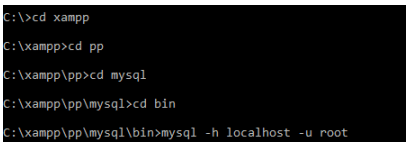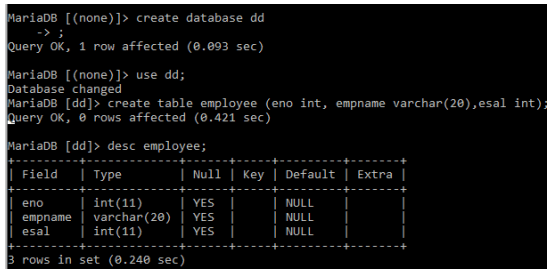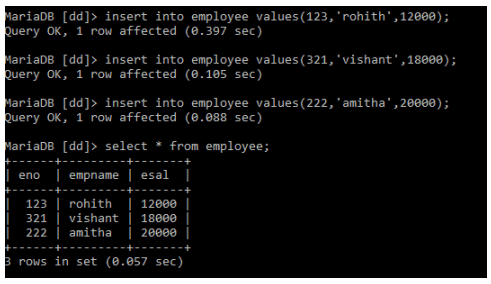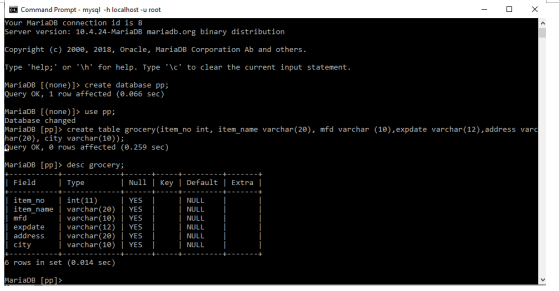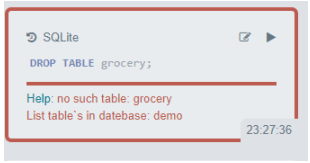Updated April 8, 2023

Introduction to SQL DROP Table
It is defined as a table structure, including its associated data, indexes, triggers, constraints, and authorization specifications, which can be deleted using the SQL DROP TABLE statement. And Drop Command works directly on data. Once this action is done it frees up a memory Space.
Key Takeaways
- Foreign key relationships make dropping tables a little bit more difficult. Additionally, if there are additional tables to be destroyed, just run the statements in the order of their dependents so that each dependency is eliminated before the subsequent table is deleted.
- It is a command in the Data Definition Language. As a result, once the Drop statement is used, it is impossible to undo this operation and retrieve the table’s data from the database.
- Where clause is not used in a drop table.
- The table’s storage space is released by the drop statement. Although if we delete all of the rows from the Delete statement, the Table structure is still present, so memory is not released.
Overview of SQL Drop Table
A table and all of its rows can be deleted with the drop table command. By using the drop table command and the tablename, one can delete a table’s complete contents, comprising all of its rows. Dropping a table is distinct from deleting all of its records. Also after deleting each entry from the field, the table’s column and constraint information remain. The table definition and all of its rows are deleted when the table is dropped.
Basic Syntax:
This DROP TABLE statement’s fundamental syntax is as follows:
DROP TABLE tablename ;How to Create SQL Drop Table Statement?
The user must possess one of the following before using the DROP TABLE statement:
- The structure of the table’s ALTER permission.
- CONTROL the available permission.
- Membership in the predefined database role dbadmin.
When a table is dropped, you should also be aware of the following functionality:
- Views
- Purposes of Stored Procedures
- Triggers Indexes Statistics
The associated views, stored procedures, and functions will still exist after a table is dropped even though they will no longer serve if they were developed without schema binding.
Now let’s see step by step process of dropping a table:
Step 1:
Create a database and a table inside a database as follows:
Starting MySQL using Xampp Server.
Step 2:
Create a table.
Here a database name is dd and a table name is employee.
Step 3:
Inserting a value into a table.
Step 4:
Drop a table using Drop Query.
Now we could see that in the above screenshot, the table name employee doesn’t exit when a table is dropped. This is how a Drop Query works.
SQL Drop Table DELETE Table
To delete multiple tables at a single time using a single Drop Statement is as follows:
Code:
DROP Table [dbname][Schema name]table1,table2….table n;While the DROP command eliminates designated schema pieces like relations, tables, constraints, or the entire schema. The DELETE command removes a few or all tuples/records from a relation/table. Only those tuples that meet the WHERE clause requirement are removed when the WHERE clause is used in conjunction with the DELETE command. However, the DELETE statement’s WHERE clause is absent. Since the delete command operates on a data buffer, it can be rollback.
SQL Drop Table IF EXISTS
Sometimes we want to get rid of a table that is no longer needed. To accomplish this, we utilize the following DROP TABLE statement.
Code:
DROP TABLE [IF EXISTS] [db_name.][schema_name.]table_name;In the above syntax:
Name the table that has to be deleted first.
Second, mention both the name of the schema that the table belongs to and the identity of the database in which the table was created. The database name can be omitted. The DROP TABLE statement will drop the table in the connected database if it is skipped.
Third, only remove the table if it already exists by using the IF EXISTS clause. SQL Server now supports the IF EXISTS clause. We will see an error if we attempt to remove a table that doesn’t exist. The table is selectively removed if it already exists thanks to the IF EXISTS clause.
Examples of SQL DROP Table
Now let’s work with SQL, we can also do it with many servers and the result we get is the same in all the databases. Here we have used xampp server to connect the databases and execute the statements.
The following SQL code is given here:
Code:
create table grocery(item_no int, item_name varchar(20), mfd varchar (10), expdate varchar(12), address varchar(20), city varchar(10));To see the structure of a code we can use Describe table name.
Output:
Drop Table:
Code:
DROP table grocery;We can see in the below output that no table called grocery has existed as the table is gone.
Output:
The table we want to delete resides in a different SQL Server database than the one that we are currently utilizing. Let’s examine how to delete a table from a different database.
Code:
TABLE Database2.db.grocery IS DROPPED;This DROP TABLE example will delete the groceries table from the SQL Server database if it was not already there. The groceries table is located in a different SQL Server instance database called Database2. As a result, the database will delete both the table definition and all of the records related to the table.
FAQ
Given below are the FAQs mentioned:
Q1. When should we use cascade in the drop table?
Answer: CASCADE must be mentioned to drop a table that is referred to by a view or a foreign-key constraint of another table. CASCADE will eliminate a dependent view.
Q2. How to destroy two tables?
Answer: To destroy two tables give a query:
Code:
DROP Table cartoon, sponsors;Therefore the above table drops the cartoons and sponsors tables from a database.
Q3. What are the constraints used to remove a table?
Answer: Following the DROP TABLE keywords, users must enter the name of the table they wish to delete. One must have the drop table privilege to remove a table. The table will be permanently deleted from the database if the query is successful.
Q4. Is the drop command DML or DDL Language?
Answer: Drop command is a DDL Language.
Conclusion
We have now seen how to delete one or more tables from a database using the SQL Server DROP TABLE statement. Starting with numerous examples, we study these statements’ syntax as well as how to apply them in queries. The distinction between the statements “Drop” and “Delete” was also covered.
Recommended Articles
This is a guide to SQL DROP Table. Here we discuss the introduction, how to create SQL drop table statements. examples and FAQ. You may also have a look at the following articles to learn more –
